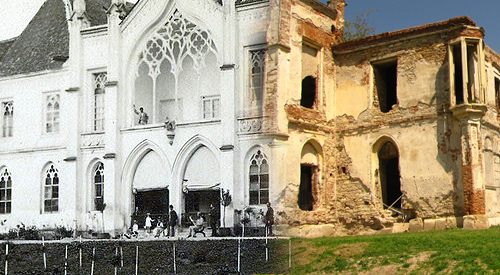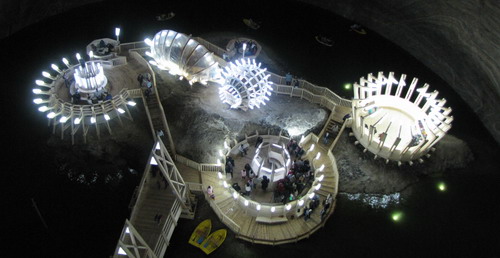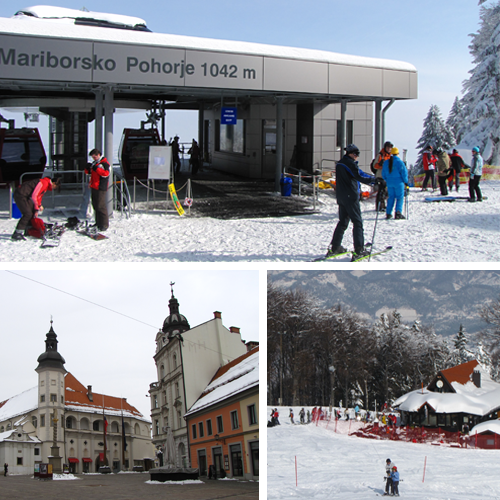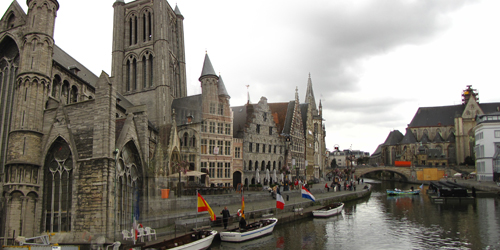…well the ruins of it actually. But still it was an interesting place to visit. And again I have begun talking about the subject, without first presenting it. So: what is the subject? The subject is the Bánffy Castle from Bonchida, a small village near Cluj. The construction of the castle started in 1437 and was finished in 1543, but it was still standing until WWII. The castle had a mixture of renaissance and baroque style. It was owned by the Bánffy family who also had a palace in Cluj.

So, how to get there? Well if one starts off from Cluj, then the main road towards Gherla has to be taken. One has to pass Jucu (Nokia) village and from then it is basically a straight road until the crossing of the entry road to Bonchida (Bontida). At the entry to the village there is a huge map of the area and one can easily spot where the castle is. Now this was a nice surprise: at last something that is easily found. The entry fee is 2RON (50 cents), so it is a bargain 😉
A lot of people do not know about the castle, simply because it does not mean much to the local population and it’s touristic potential is barely being scratched. But there is hope: the castle is being slowly restored after signing an agreement between the Romanian Ministry of Culture and “Institute of Historic Building Conservation” from Great Britain and The Office for Hungarian Cultural Heritage Protection (I hope I translated it right). The restoration works have been under the high patronage of Prince Charles of Wales who has visited a number of times the construction works.
What is sad: this is only one of the numerous castles and fortresses which have been destroyed after WWII and under the period of the communism. I have visited several countries and admired the abundance of cultural heritage sites. These are the backbones and pride of a society: something to fight for, something what gives you the necessary power to move on. Much of this is completely lost in our country. We have a lot to work until we can get things right, but as this example shows, nothing is lost forever…
Picasa photos here.
—===[ #14 ]===—




